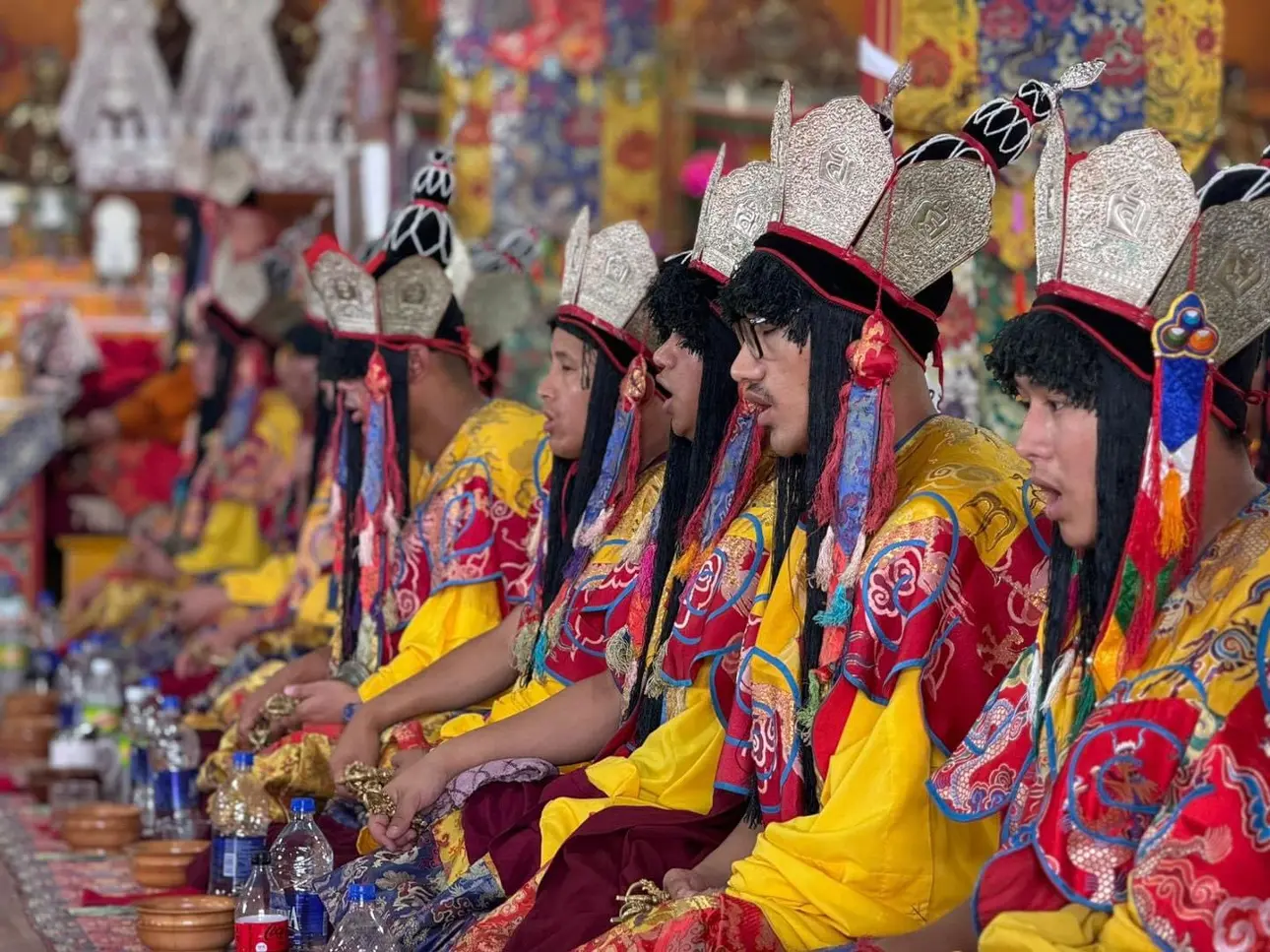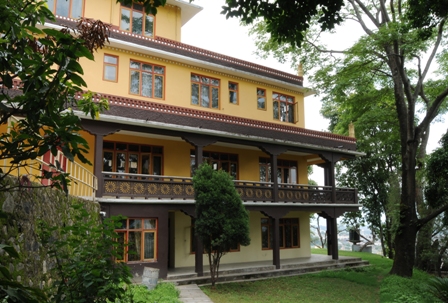The Meditation Halls

The Meditation Hall or Assembly hall is at the core of every monastery. Here the prayers and pujas are held, the ceremonies and special events are celebrated. The architecture of a meditation hall is traditionally defined. Each and every thing has a special symbolic meaning. The layout of the hall itself represents the way to enlightenment, reminding us of the necessary steps on the path.
Read more on the special meaning of some elements of a Tibetan temple
There are three meditation halls in the monastery compound, each having its own purpose.
The Lama Tsong Khapa Gompa
The main gompa in the entrance courtyard is the first thing you see as you come through the gate. The morning prayers of the monks are held in here and you are welcome to sit in on these. The courtyard in front is the debate court yard with the debate house on the side. Here the philosophy students hold their debating session's morning and evening. It is fascinating to watch a debate, seemingly a chaotic shouting session, which in reality is a well coordinating exchange of argument against counter argument on a particular subject. The main figure in the middle of the altar is lama Tsong Khapa, Tibetan saint and founder of the Gelug tradition. There many statues on either side. On the left side, around the statue of Shakyamuni Buddha collection many Tibetan texts, mainly the Kangyur, which is a collection of all the teachings of Shakyamuni Buddha, and also the Tengyur, which is a collection of commentaries on these teachings.

Tantric College
The Tantric College gompa is a treasure house of beautiful paintings, statues and thangkas. On the walls are three huge applique thangkas of the three main deities of the Gelug tradition. The altar also holds a collection of Tibetan texts relevant to the Tantric studies. Twice a year the students make sand mandalas in connection with these studies. They also perform fire pujas and blessing ceremonies. The gompa is open to the general public. The Tantric College is home to about 60 monks studying there, and we request you to respect their private space.
The Chenrezig gompa
The Chenrezig gompa is the oldest gompa. This was the site of the astrologer's house and the first gompa was set up in one of its rooms. This is where the lamas gave their first teachings to their western students.

The new gompa was built in 1990. In the altar you see in the middle the statue of Shakyamuni Buddha and on the left side one of the oldest statues at Kopan, a thousand-arm Chenrezig, the Buddha of Compassion, carved from wood that was in the first gompa of the monastery. On the far left is a statue of the Fasting Buddha, and image of Shakyamuni Buddha when he was practicing austerities in the forest. The day he gave up the practice of austerities and accepted milk from a passing milkmaid is a very famous moment in Shakyamuni's' life story.
The courses for the students are held here, and many fond memories of many people attached to it. This is also where the Daily Dharma Talks take place. You are welcome to use it for your daily practice and meditation, when it is not in use for classes
The Relic Shrines
Kopan Monastery has a collection of very precious relics. Relics are the remains of beings that have devoted their entire life to virtuous practice. Beings with high spiritual attainments establish relics as means for passing on the blessings of their body, speech and mind to their disciples.

On the top floor of the Chenrezig gompa is the Relic Shrine Room of our previous abbot, Khensur Lama Lhundrup. He passed away in September 2011. After his cremation, many relics were found. Read more on Khensur Lama Lhundrup here
On the top of the Tantric gompa is the Relic Shrine Room of Geshe Lama Konchok, a great yogi who lived at Kopan Monastery for many years and passed away here in 2001. Read more on Geshe Lama Konchok here
Please make arrangements with the reception if you would like to visit these two shrines.